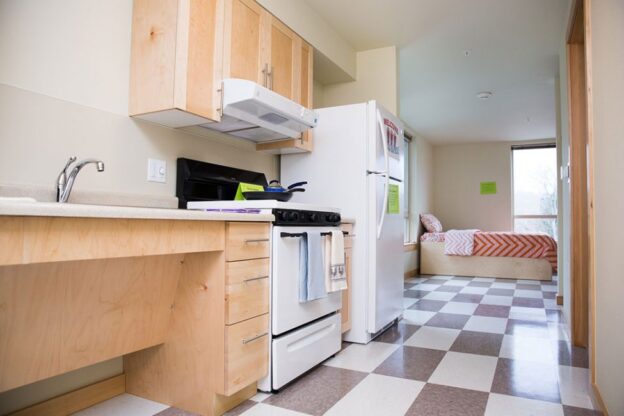
The Role of Supportive Housing in Depression Recovery in Gibbstown
Understanding Supportive Housing and Its Significance
Supportive housing is a critical and timely response to the escalating social challenge of homelessness and physical as well as mental health issues within vulnerable populations. This form of housing strategy integrates residential facilities with personalized support services for individuals who are battling chronic issues such as mental illness, substance abuse, HIV/AIDS, and homelessness, among others. The structured framework connects comfortable, non-time-limited affordable housing arrangements with flexible and voluntary support services that cater to residents’ needs. Such services may include medical attention, mental health treatment, job training, and life skills development.
The significance of supportive housing is multi-faceted. First, it addresses the basic human need for shelter while providing a comprehensive platform for recovery and stability. Second, it offers a cost-effective alternative to institutional care, reducing dependence on high-cost public systems. Furthermore, supportive housing also plays a crucial role in community building. Integrating the tenants within a network of social and communal activities, fosters positive participation, shared responsibility, and societal inclusion. Ultimately, it serves as an indispensable tool for empowering communities and catalyzing individual transformation.
Effects of Living Environment on Mental Health
The living environment of an individual has the potential to influence their mental health significantly. Various environmental factors such as noise, pollution, crowding, housing, and neighborhood conditions can contribute to stress, anxiety, and other mental health issues. For instance, high noise levels can lead to irritability and constant stress, while living in overcrowded conditions or distressed neighborhoods can cause feelings of helplessness or fear, which can exacerbate existing mental health conditions or contribute to their development.
A nurturing and positive living environment, on the contrary, can promote mental well-being. Having access to green spaces, and well-lit environments, and living in quiet, less busy areas can contribute to a sense of serenity and decreased mental distress. Personal space and control over one’s environment have also been associated with higher levels of mental health and well-being. In essence, the quality and nature of the living environment can bear a direct impact on a person’s mental health, making it an important aspect to consider in mental health care strategies and interventions.
Impact of Depression on Daily Life in Gibbstown
Depression significantly affects the daily life of residents in Gibbstown. It can turn simple tasks like getting out of bed, eating, or even taking a shower into a challenge, disrupting daily routines and productivity. Common symptoms such as lack of interest, constant fatigue, and difficulty concentrating can make maintaining a job or fulfilling responsibilities extremely difficult. These challenges, coupled with the social isolation often experienced by those living with depression, can lead to a drastic deterioration of quality of life.
Furthermore, the societal stigma associated with depression adds another layer of complexity to the situation. Many individuals may feel ashamed or embarrassed to seek help due to fear of judgment or misunderstanding. This, in turn, can lead to a cycle of untreated depression, such as increased feelings of helplessness and unworthiness. Consequently, these factors combined inflict a profound impact on not only the mental and physical health of individuals but also their social relationships, occupational functioning, and overall life satisfaction.
How Supportive Housing Assists in Overcoming Depression
Supportive housing can prove instrumental in dealing with depression by providing a safe, structured, and nurturing environment. This form of housing typically includes amenities and services tailored to promoting mental well-being. Access to round-the-clock medical care, therapy sessions, peer support, and rehabilitative programs foster a routine that alleviates depressive symptoms. Individualized care plans, focusing on the unique needs of each, ensure personal and efficient treatment, thereby increasing the chances of successful recovery.
Additionally, supportive housing helps to mitigate several stressors often associated with traditional housing that can exacerbate depression. Financial insecurities, isolation, the responsibility of maintaining a household, and lacking access to timely treatment can all contribute to persistent and worsening depressive symptoms. By providing low-cost streamlined care, opportunities for community involvement, and assistance with daily living requirements, supportive housing effectively eases these stressors, creating a conducive atmosphere for mental recovery and growth.
Design Elements of Supportive Housing Promoting Wellness
The design considerations for supportive housing go beyond basic architectural and spatial principles. They also incorporate elements aimed at facilitating psychosocial wellness among the residents. Such elements form an integral part of the therapeutic environment, fostering recovery from mental health challenges and nurturing overall well-being. These elements are strategically used to create a holistic environment that evokes a sense of safety, belonging, and control over one’s living space.
Moreover, in supportive housing, particular emphasis is placed on facilitating social interaction. Commonly shared spaces, such as living rooms, communal kitchens, and recreational areas, are designed in a manner that encourages interpersonal relationships. In tandem, private spaces are crafted thoughtfully to offer personal sanctuary when needed. The amalgamation of these design features creates a balanced environment that guides individuals in their recovery process while enhancing their quality of life.
Local Initiatives and Programs for Supportive Housing in Gibbstown
To address the increasing need for supportive housing, Gibbstown has implemented several innovative initiatives. One such program is the Community Integration Project (CIP). CIP is built on the concept of community-oriented supportive housing, to assist individuals suffering from depression. This initiative emphasizes creating stable and safe living environments that can substantially contribute to the recovery process. The program focuses on critical life skills and aims at reducing the reliance on crisis services.
Another noteworthy program is the Housing First initiative. Unlike traditional housing programs that often require individuals to first address their mental health issues before moving into housing, the Housing First initiative aims to provide immediate housing assistance. It’s founded on the belief that psychological and emotional recovery is significantly enhanced when individuals have a stable living environment. This program in Gibbstown prioritizes supportive services and permanent housing as an initial step toward rehabilitation. The Housing First initiative is showing promising results in fostering independence and stability in residents and significantly aiding their overall recovery journey.
Testimonials: Stories of Depression Recovery in Supportive Housing
Supportive housing, with its integrative and holistic approach, plays a significant role in mental health recovery, particularly for individuals coping with depression. A testament to this effect is derived from various personal accounts depicting the transformative power of supportive housing. For instance, Sarah, a 35-year-old Gibbstown resident, shares her poignant narrative, entailing her initial struggle with severe depression and her eventual recovery aided by the unique provisions of supportive housing.
Upon shifting to supportive housing, Sarah experienced a gradual improvement in her health condition, which she partly attributes to the environment’s inclusivity and positive stimulus. She describes, how she felt a sense of belonging and acceptance by the community formed within the housing unit, a factor paramount in her recovery journey. In Sarah’s words, “These places are more than houses; they feel like home, provide solace, empathy, and real aid without judgment”. Many more testimonies like Sarah’s reinforce the crucial role that supportive housing can play on the path to mental health recovery.
Comparing Traditional Housing and Supportive Housing for Depression Recovery
In the context of individuals battling depression, it is critical to understand the contrasting roles of traditional housing and supportive housing. While the traditional housing setting generally acts as a residence, offering no direct links to any mental well-being measures, the earmark of supportive housing lies in its core objective to positively affect mental health outcomes. This form of housing goes above and beyond the provision of just a roof over one’s head, integrating assistance with mental and physical well-being, employment, social relationships, and life skills.
On the other hand, traditional housing is often devoid of systematic structures aimed at addressing mental health challenges. Consequently, individuals diagnosed with depression may grapple to manage their symptoms independently, with limited or no direct access to professional mental health services. Conversely, in supportive housing, residents enjoy an environment tailored to their specific needs, which facilitates better management and recovery from depression. Here, specialized service providers are included in the system to assist, support, and educate them about managing their mental health complexities. Hence, supportive housing can significantly contribute to a more effective and collective approach to tackling depression.
Challenges and Solutions in Implementing Supportive Housing
Implementing supportive housing presents myriad challenges. Notably, stigma associated with mental health issues can result in resistance from local communities due to unfounded concerns over safety or property values. This bias often hinders the acquisition of suitable locations for the establishment of supportive housing. Financial obstacles, too, are prevalent; securing funding for construction as well as the sustaining of services is a daunting task. The inherent complexity of mental health issues necessitates a diverse range of services and professionals, increasing the operational cost.
Overcoming these barriers necessitates a multi-faceted approach. Effective public campaigns to raise awareness and educate the public about mental health can help to dispel negative attitudes and stereotypes. This can create a more accepting environment for supportive housing in communities. Regarding the financial constraints, a combination of private, local, state, and federal funds can provide the necessary monetary support. Collaboration with non-profit organizations as well as philanthropic entities can further augment financial resources. It is also key to build strong partnerships with healthcare providers to ensure residents receive the comprehensive treatment and support they require.
Future Prospects for Supportive Housing in Gibbstown
The broader landscape of mental health care is undergoing a transformative change; few of these changes are as promising as those surrounding supportive housing. A forward-thinking Gibbstown community understands the immense value of integrating comprehensive mental health treatments with supportive housing. These nuances are empowering establishments to offer more dynamic supportive housing projects, conceived with architectural mindfulness, to supplement traditional depression recovery methodologies.
As funding becomes increasingly available, more individuals in Gibbstown will have access to this novel approach to mental health recovery. The scheme also takes into account the expansion of supportive facilities, with increasing care amenities such as mental health counseling and vocational training resources. This innovation paves the way for a more holistic and inclusive future for individuals battling depression. The growth potential for supportive housing in Gibbstown, therefore, appears not just feasible, but entirely probable.


